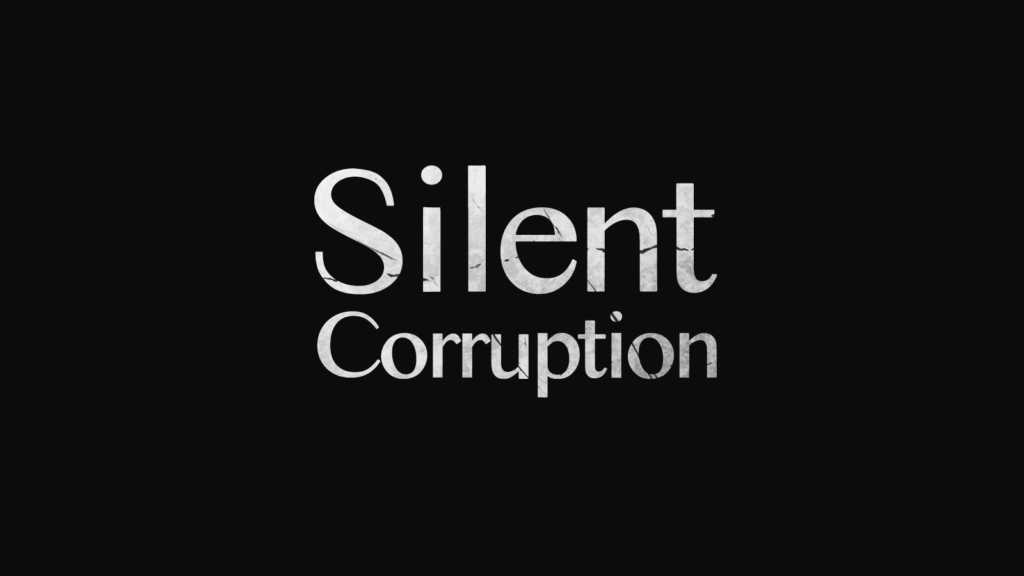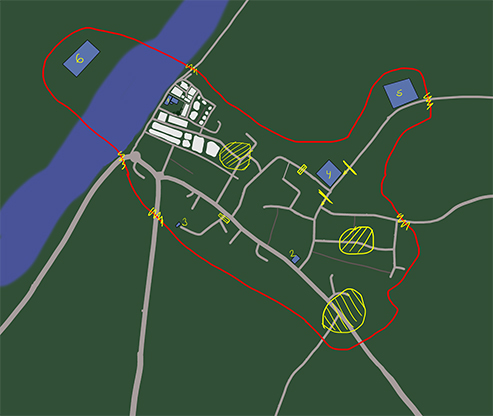In this blog post, I’m excited to share some updates on my dev journey and survival horror game, Silent Corruption, which I initially conceived back in 2017. At that time, I lacked the skills and resources to fully develop my ideas, and, admittedly, I still face these challenges. Since then, I’ve been learning more about game development, promotion, and everything needed for a commercial release.
About the Game
Currently in the preproduction stage, Silent Corruption is an exploration survival horror experience that blends classic survival gameplay with sandbox elements such as hunger, thirst and scavenging. I’ve been working on the game design and story, and I’m now preparing to jump into Unreal Engine to start working on a prototype.

In this game, players step into the shoes of Jane, a young woman in her 30s, on a desperate quest to find her missing best friend, Nokoa. Upon arriving in the desolate town of Harrowgate, Jane is confronted with nightmarish creatures and a foreboding atmosphere. Players must guide Jane through this heart-pounding journey, uncovering the town’s sinister secrets while managing limited resources and making critical decisions.
The game targets horror enthusiasts aged 25-40 who appreciate narrative-focused experiences akin to Silent Hill and Resident Evil. Key elements include limited inventory space, puzzle solving, exploration, enemy avoidance, and a heavy emphasis on decision-making. Inspirations for this game include the atmospheric tension of Silent Hill and the immersive survival mechanics of The Long Dark and Project Zomboid.
Trying to build a captivating and terrifying world
My focus for the pass month or so, has been on developing the story and lore to ensure a compelling and believable world for players to explore. I’m also deepening my work on level design and environment art, striving to create gameplay that is both enjoyable and terrifying, emphasizing a true psychological horror experience without relying on cheap jump scares.
I’ve started designing the blockout for the main town in the game, which I’ve named Harrowgate. Drawing inspiration from real English towns, this process involves creating the town map in Photoshop, where I can meticulously plan out and visualize the architecture and layout. After the initial design in Photoshop, I transition into Unreal Engine to block out Harrowgate using basic shapes.

This step allows me to build a basic 3D model of the town, providing a foundation for more detailed development and helping to ensure that the scale and spacing of the environment feel right. It’s important to note that this is a very initial idea and will likely change and evolve significantly as development progresses.
Learning to release a commercial title
Although it’s just me working on this game without any external funding, I’m committed to it and enjoying the process immensely, regardless of the outcome. At this stage, I’m working solo because I’m not yet ready to bring others on board. Firstly, I don’t have any funding and would feel terrible asking people to work for free. Secondly, I’m still figuring out exactly what I want to achieve with this game, and it feels like it would be chaotic to try and collaborate with someone under these uncertain conditions.
Marketing Strategies for My Indie Game
As I dive deeper into the realm of marketing for indie games, I find myself overwhelmed with varying advice. I’ve been consuming a plethora of resources, reading articles and watching numerous videos, to understand the best practices for building an audience.
The consensus seems to be to start gathering a following as early as possible. However, this proves challenging when I currently don’t have much I can show. On top of that, I’m also struggling with the decision of how much to reveal and what aspects of the game to show that won’t give away too much or create the wrong impression.
My biggest concern is that early, unpolished previews might make the game appear substandard or uninteresting, which could deter potential players and followers. Additionally, I’m cautious about sharing too much to avoid spoiling key elements of the game. Determining the right amount and type of content to share is a delicate balance that I am still trying to find.
Development Struggles
Although I realise not many might be interested in these reflections, I feel the need to justify my intermittent progress on the game. Sharing them feels therapeutic and might resonate with others experiencing similar struggles. Over the years, I’ve started several projects only to abandon them due to “scope creep” (the tendency to continuously add new features until the project becomes unmanageably large).
Despite advice from seasoned developers recommending that beginners should start with simpler, shorter games to manage the steep learning curve better, including aspects like marketing and teamwork, I find myself drawn to creating more complex, story-rich games. These types of games allow for deeper exploration and a more enriched experience, which I find more fulfilling.
I currently maintain a day job that helps pay the bills but fortunately allows enough flexibility for me to dedicate time to developing my game. Although I am aware of the potential for commercial failure, I remain optimistic.
Thank you for your interest in my journey. I look forward to sharing more updates and getting your feedback on my work, aiming to create a game that not only satisfies my creative vision but also resonates with horror enthusiasts.
Share this!

